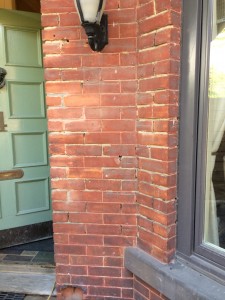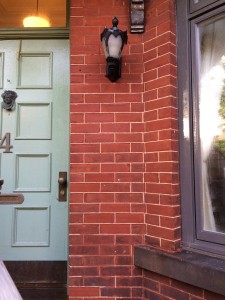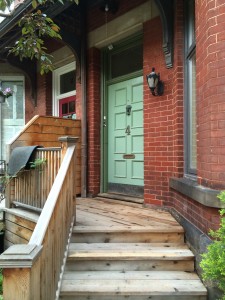During the late 1800’s and early 1900’s a decorative technique was sometimes used to give a building the appearance of pencil thin mortar joints, this process is known as tuck pointing, or sometimes as English tuckpointing. This practice was often specified by architects and designers of the period who wanted to achieve the appearance of the highest quality bricklaying. They would employ professional tuck-pointers after the bricks were laid to give the building its finished appearance. In Toronto you often see examples of tuckpointing on red brick homes, with the mortar a tawny beige colour, the colour of Natural hydraulic lime. Though this practice is rarely used on new construction today, many homes are in need of repair and restoration to their tuckpointing.
We were hired to restore the front entrance of a turn of the century home in Cabbagetown. It is a red brick building that had been tuckpointed when it was built, and through a combination of poor repairs and ageing was in need of some structural and aesthetic repair.
Using tradition lime mortar and restoration bricks we repaired all the damaged areas and reproduced the original tuckpointing profile and appearance, returning the beauty to the entrance of this house. We love to do this type of work, and to work with homeowners who are interested in maintaining the appearance and structural integrity of their masonry.


